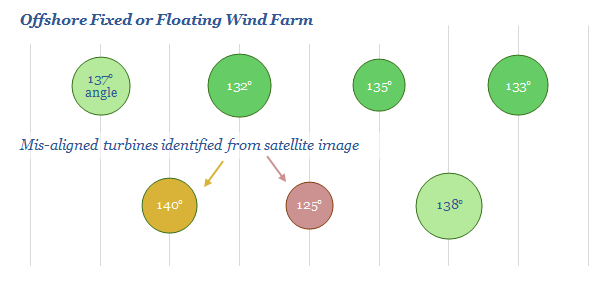Followers not leaders? In a commodity industry, it is important to invest with superior technologies, if you want to generate superior returns. Hence we have been relatively cautious on the Majors’ offshore wind investments. Commoditised, industry-standard technologies yield single-digit returns at best. Model it from a portfolio perspective, and the optimal portfolio allocation to undifferentiated renewables technology is just 5-13% (chart below, note here).
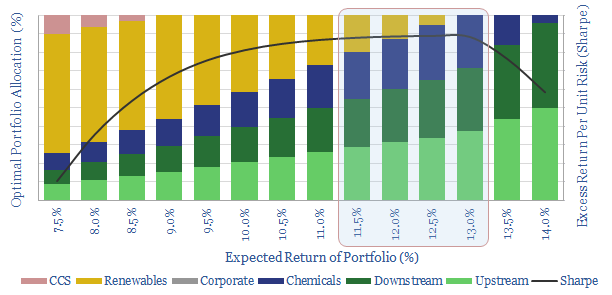
Leaders not followers. 2018 did include some encouraging solar innovations from Oil Majors, as reviewed in our data-file (below). But as we start reviewing 2019’s patent filings, we are looking for examples of Energy Majors developing superior technologies for traditional, offshore wind. Today’s note highlights an example…
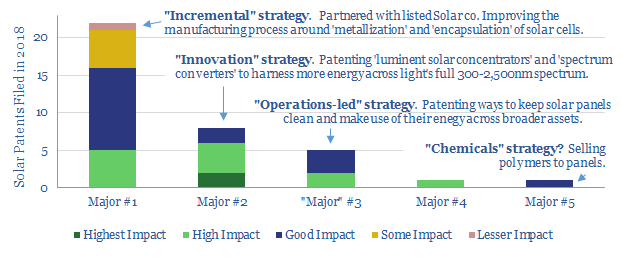
[restrict]
Equinor has patented a new wind monitoring methodology
Yaw misalignment is a challenge in the wind industry, denoting the variation of a wind turbine’s blades from their optimal orientation facing directly into the wind. It reduces turbines’ productivity, and exacerbates wear, shortening a project’s lifetime. It is particularly problematic for fixed and floating offshore wind turbines.
Current methods to orient turbine blades all have limitations.
- Anemometers on the turbines’ nacelle can be used to measure wind direction (and strength), however, it is difficult to obtain accurate readings in the turbulent air behind rotor blades.
- LiDAR can be measured on turbines, illuminating the target with a pulsed laser light and sensing the reflected pulses. However, LiDar is costly and can only mesaure one turbine at a time.
- iSpin uses three ultrasonic sensors on the rotor’s spinner (i.e., the cone-shaped cover at the centre), but this requires expensive instrumentation on the turbine.
Equinor has patented a new approach: a computer vision method, which can identify the orientation of wind turbines’ rotor blade discs from visual images; taken via a UAV (drone), a satellite image or from a suitable fixed platform. Satellite imagery is most discussed in the patent (chart below), adding to our growing list of satellite applications in industry.
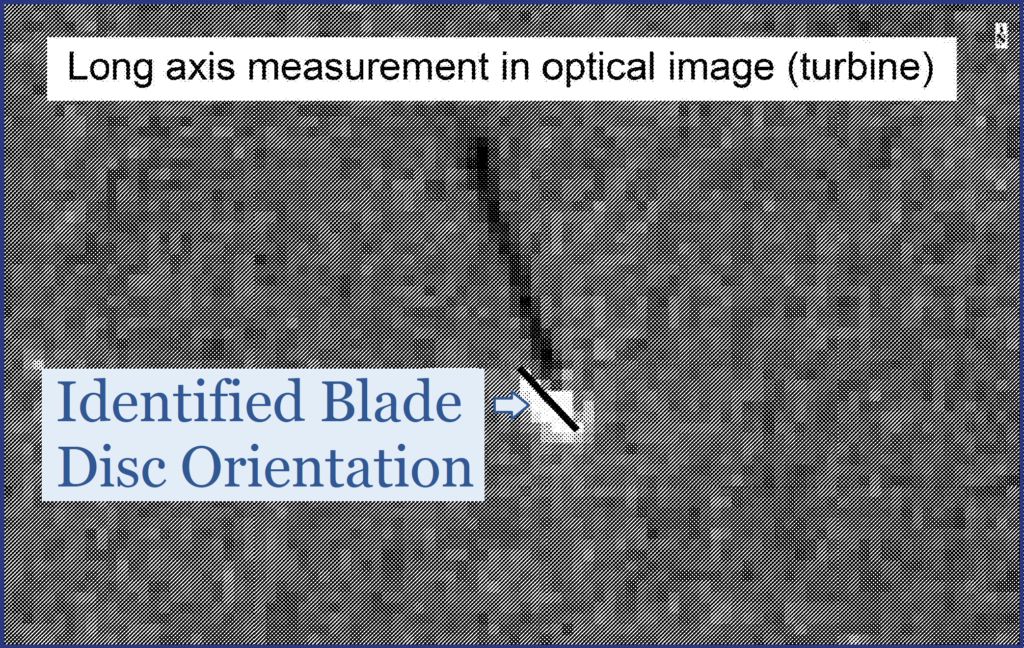
The methodology: Each turbine, and each blade disc are identified from the images, based on machine learning (similar to the algorithms used for facial recognition). The disc’s angle to the North line may be determined, and its blade diameter is tabulated. Outliers that are more than 3-, 5- or 8- degrees misaligned may be identified. Remedial action is taken for misaligned turbines, culminating in an O&M plan
Aadvantage of the method are that:
- The images are “synoptic”, providing information about the overall state of the overall windfarm, to determine if any any one turbine is misaligned.
- On site inspections are not necessary if the data are based off satellite imagery, helping to reduce opex, HSE risks and environmental footprint.
- Appropriate flexibility can be incorporated. “Sometimes conditions may be turbulent and so all of the wind turbines may “see” a different wind direction”.
Economic opportunities: what is the impact on NPVs?
Equinor notes the opportunity that if “all wind turbines can be kept properly aligned, production could be increased by 2%, worth c£8Mpa at a typical wind farm. We have replicated the calculations at our model of a typical US Offshore Wind project, finding a $10M uplift to annual cash flow is possible in a best case scenario, uplifting the project’s levered IRR by c0.5%, creating an additional c$100M of NPV6.
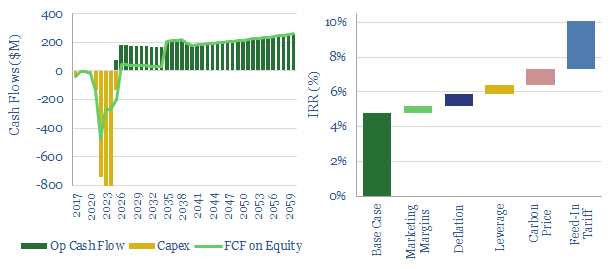
We remain prepared for a slowdown in offshore wind activity in Europe, as renewables are close to reaching saturation in heartland markets (chart below). But as the industry expands into new geographies, we remain hopeful that Energy Majors will be ‘leaders not followers’ as they participate in more projects.
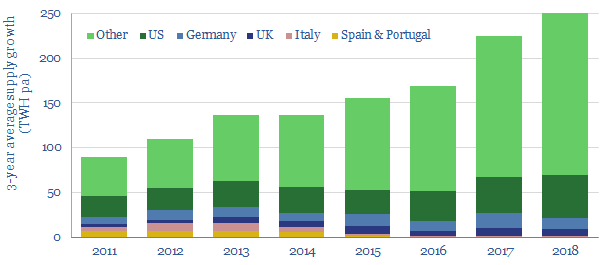
Source:
Source: Keseric, N. & Hall, R. (2019). Wind turbine blade orientation detection. Equinor Patent, GB2568676A.
[/restrict]
